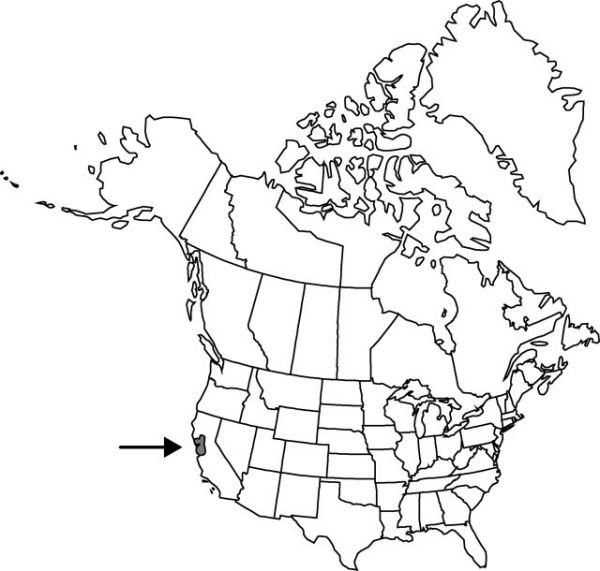Trillium chloropetalum
Fl. N.W. Amer., 661. 1902.
Rhizomes ± erect, brownish, somewhat compressed-thickened, superficially bulblike, praemorse, not brittle. Scapes 1–3, green, round in cross section, 2–6.5 dm, robust. Bracts held well above ground, sessile (narrowing of bract blade may give bract subsessile appearance); blade densely to weakly mottled in dark brownish green, mottling becoming more obscure to absent as bract matures, broadly ovate, 7–17.6 × 7.4–17.7 cm, not glossy, apex obtuse-rounded. Flower erect, odor roselike, spicy; sepals spreading-ascending above bracts, green, lanceolate, 35–65 × 7–12 mm, margins entire, flat, apex obtusely rounded; petals long-lasting, erect, connivent, ± concealing stamens and ovary, yellow, bronze, maroon, brown, deep purple, reddish brown, pink, dark purplish red, purplish bronze, rarely greenish white, not spirally twisted, veins not engraved, oblanceolate to obovate, 6.5–10 × 1.5–2.5 cm, thick-textured, base cuneate, margins entire, apex variably acute to almost truncate, erose; stamens erect, purplish, 17–26 mm; filaments purple, ca. 4 mm, widest at base, much shorter than anther sacs; anthers erect, straight, ± purple-brown, 13–22 mm, dehiscence introrse; connectives purple, straight, extended ca. 1–1.5 mm beyond anther sacs; ovary purple, ovoid, 6-angled, 6–12 mm; stigmas small, divergent or erect, distinct, purple, subulate, 4–8 mm, not fleshy. Fruits red-purple, fragrance not reported, ovoid, obscurely 6-angled, 2.5–3 cm, pulpy, juicy. 2n = 10.
Distribution

Calif.
Discussion
Varieties 2 (2 in the flora).
J. D. Freeman (1975) considered that Trillium chloropetalum differs from T. albidum in having introrse (not latrorse) anther sacs, and that the purple pigments present on anther and ovary tissue here are absent in T. albidum. In some places, hybridization between the two certainly has occurred, and a complete range of intergrades exists.
This species merits further study. The following varieties are only weakly differentiated and perhaps ought to be dropped.
Selected References
None.
Key
| 1 | Petal tissue always with yellow pigments, often present with other pigments; petals yellow, greenish yellow, greenish purple, or bronze-green or brown. | Trillium chloropetalum var. chloropetalum |
| 1 | Petal tissue lacking yellow pigments; petals purple, reddish purple, garnet red, pink, or greenish white. | Trillium chloropetalum var. giganteum |